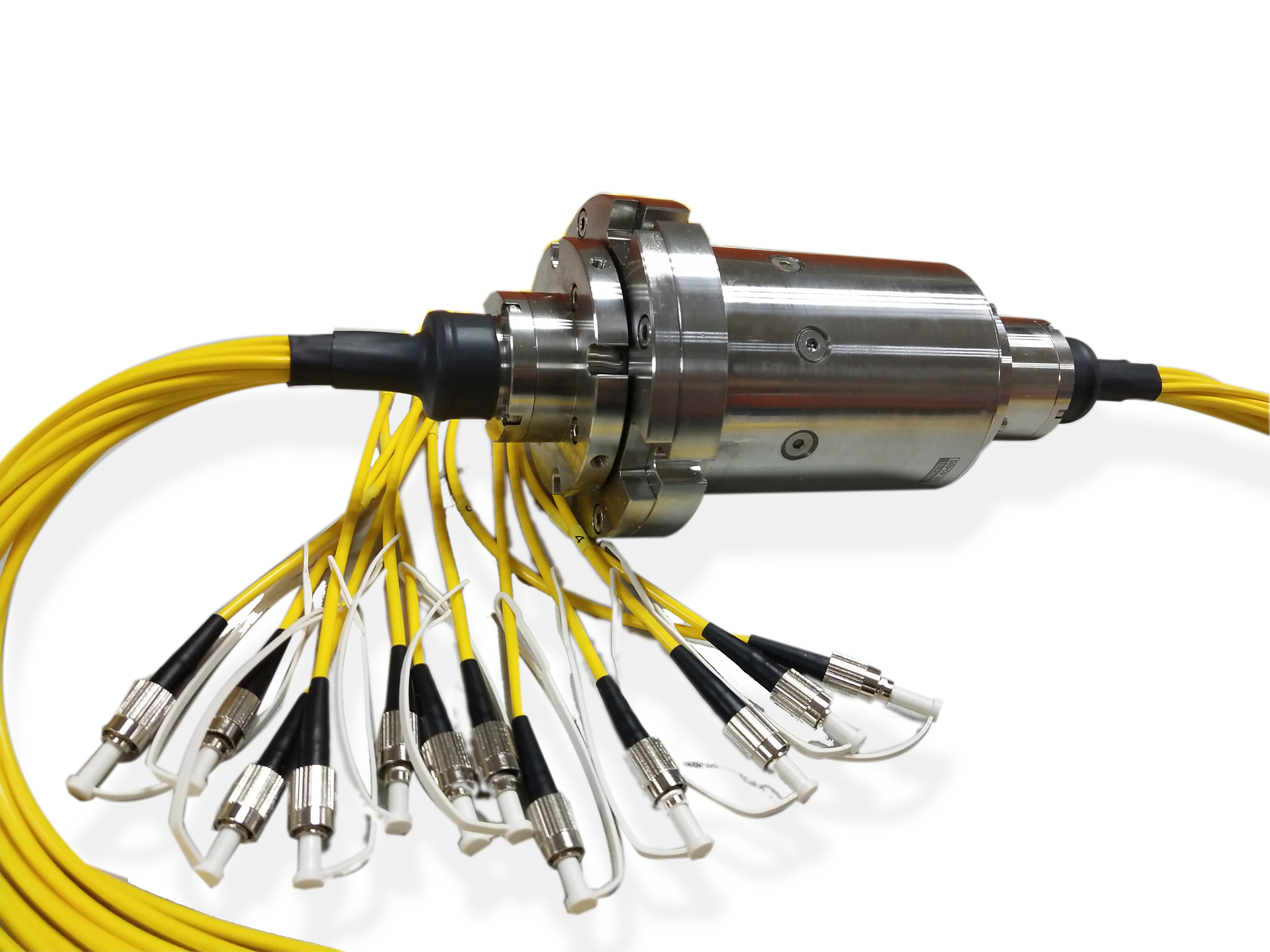Fiber Optic Rotary Joints

Fiber optic rotary joints are used to pass optical signals across rotating interfaces, particularly for large amounts of data, are available in single and multi-channel options, can be combined with electrical slip rings to provide an integrated rotational interface for optical signals and electrical power. FORJs usually operate at 1300 nm to1550 nm wavelengths singlemode type and 850 nm to 1300 nm multimode type, support long distance data links under high shock and vibration or harsh environments. FORJs intrinsic advantages ensure they are not easy to be influenced by environment and achieve the reliable transmission, the rugged bodies allow fiber pigtails or ST, FC receptacles on either the rotor or the stator side.
Features
■ Bidirectional optical transmission
■ Singlemode and multimode optional
■ Can be combined with electrical slip rings and rotary unions
■ Stainless steel housing
■ Rugged design for harsh environments
Advantages
■ High bandwidth and EMI immunity
■ High shock and vibration capabilities
■ Compact design
■ Long lifetime
Typical Applications
■ 4K, 8K ultra HD television
■ Unmanned aerial vehicles and sub-systems
■ Radar antennas
■ Winches and cable reels for remotely operated vehicles
■ Heavy equipment turrets
■ Unmanned ground vehicles
| Model | Fiber Type | Channels | Wavelength(nm) | Size DIA × L (mm) |
| MJX | SM or MM | 1 | 650-1650 | 6.8 x 28 |
| MXn | SM or MM | 2-7 | 1270-1610 nm for SM; 850-1310 nm for MM | 44 x 146 |
| JXn | SM or MM | 8-19 | 1270-1610 nm for SM; 850-1310 nm for MM | 67 x 122 |
